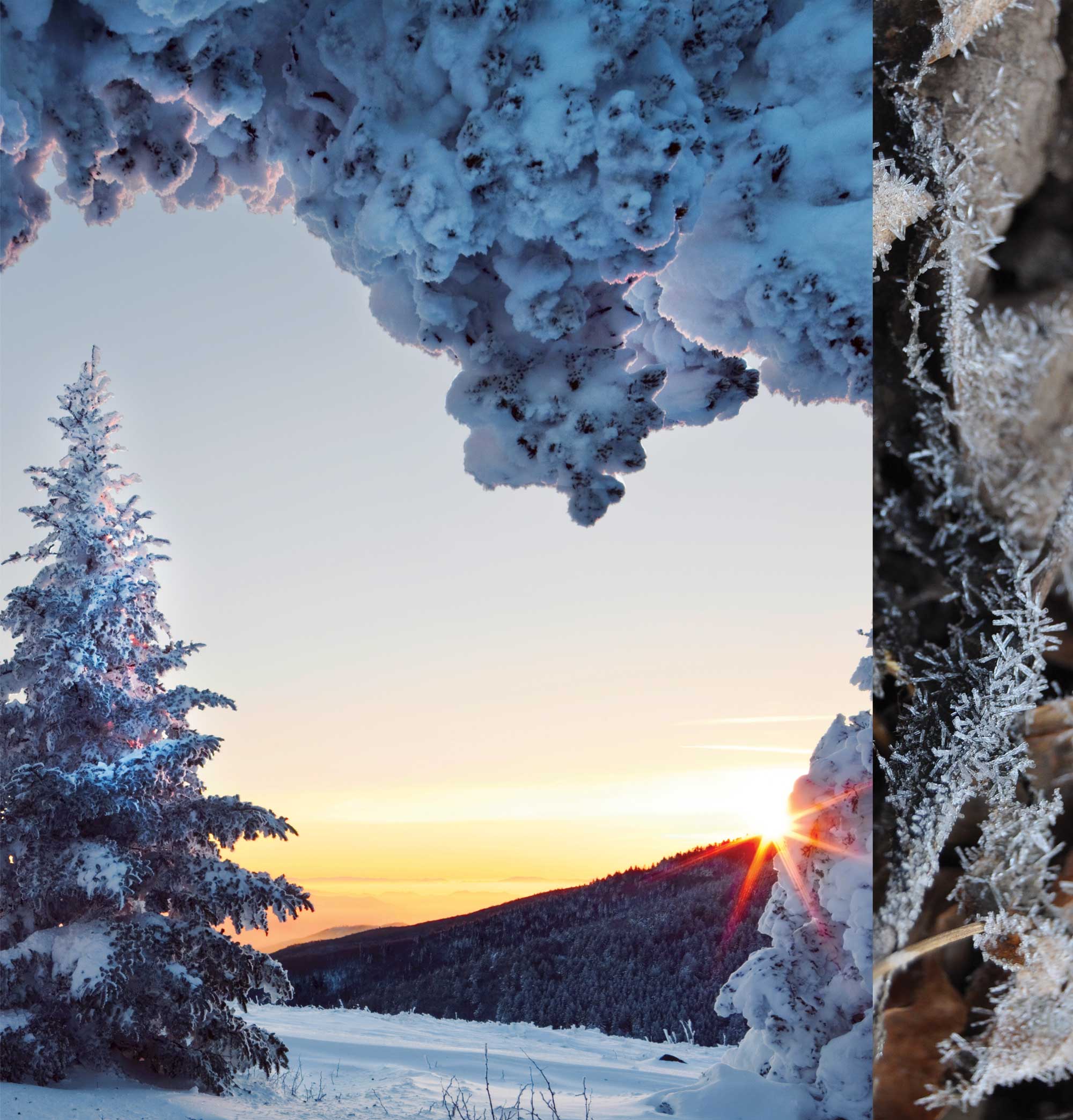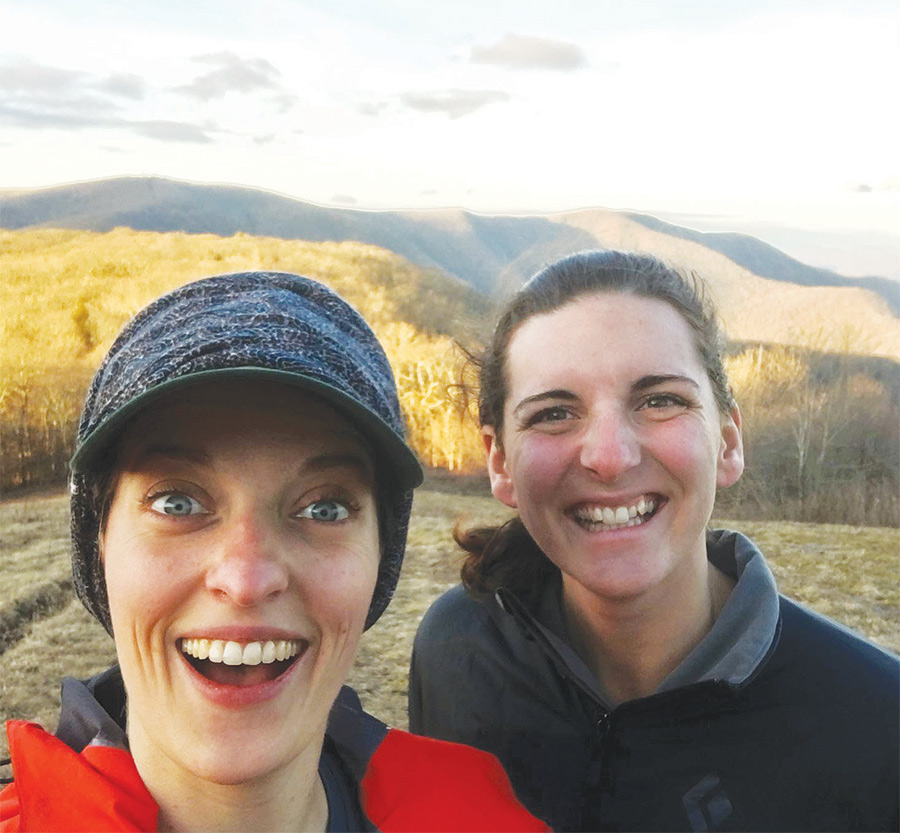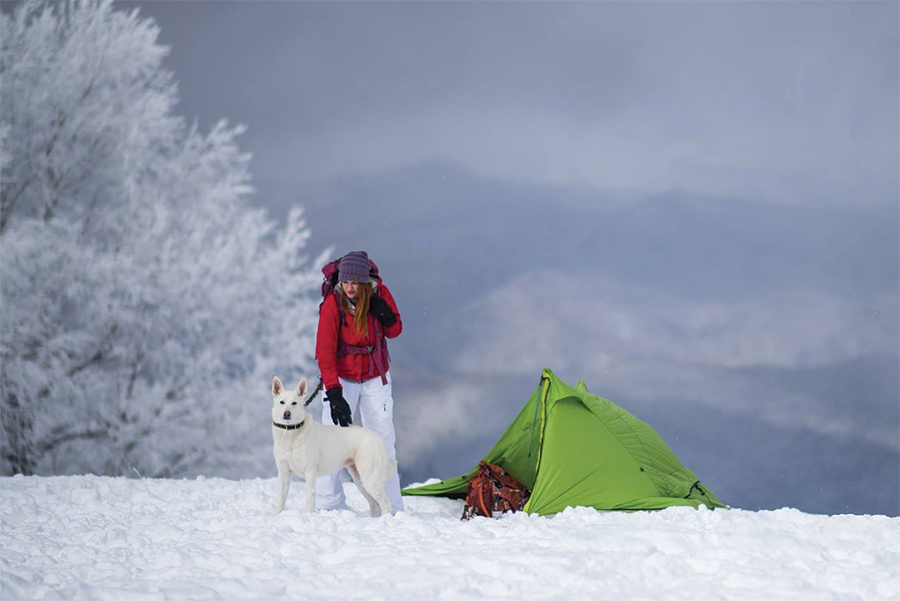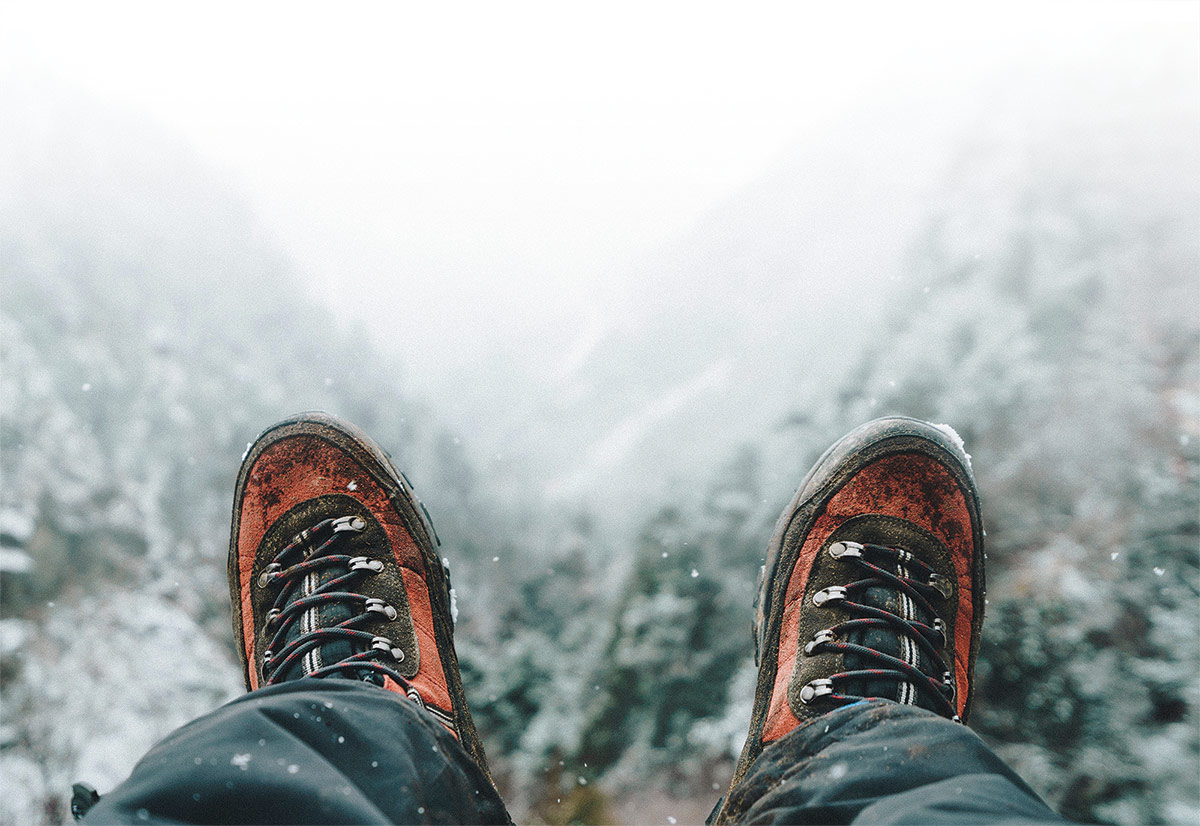

“Awesome!” she replied. “And here I thought January camping would be a tough sell.”
Chloë works for the Appalachian Trail Conservancy (ATC) and needed to hit the Trail to scout a route for a “How to Hike the A.T.” backpacking course she’d be leading that spring, but I had my own motivations for joining her. I had just found out that I would be moving to Colorado in three weeks. While I was excited for all the skiing I would soon be doing, I knew that my hiking boots would get tucked away in a corner of my closet for the next few months. The mountains of western North Carolina had been my home for almost four years, and I couldn’t think of a better way to say goodbye for now than to spend a weekend exploring a new section of that familiar white-blazed Trail. So what if it was January?

“Awesome!” she replied. “And here I thought January camping would be a tough sell.”
Chloë works for the Appalachian Trail Conservancy (ATC) and needed to hit the Trail to scout a route for a “How to Hike the A.T.” backpacking course she’d be leading that spring, but I had my own motivations for joining her. I had just found out that I would be moving to Colorado in three weeks. While I was excited for all the skiing I would soon be doing, I knew that my hiking boots would get tucked away in a corner of my closet for the next few months. The mountains of western North Carolina had been my home for almost four years, and I couldn’t think of a better way to say goodbye for now than to spend a weekend exploring a new section of that familiar white-blazed Trail. So what if it was January?

Once the leaves have fallen, many people seem to think that they must shutter themselves away for a long season of hibernation. It’s too cold outside, the road is closed for winter, the Trail is covered in snow — the excuses are many. To be sure, winter hiking requires a bit more planning than your average summer stroll, but with the right gear and proper preparation, winter hikes can become some of your favorite days on the Trail. Cooler temperatures keep the crowds away, providing more of a sense of solitude. Bare branches make much better windows than leafy canopies. And if you’ve never seen the shimmer of hoarfrost at sunrise on a grassy bald, well, you don’t know what you’re missing.

Do your research. During winter, many facilities on public lands are closed, meaning that spigot you were depending on to fill up your water bottles before your hike may not be so dependable. Visit the website of the local land manager and contact them if necessary, to find out what’s open and what’s not, including things like roads, bathrooms, and campgrounds.
Be an underachiever. You may crush 20-mile days in the summer, but the winter is a different ballgame. There could be snow or mud that slows your progress, but moreover, it’ll be dark by five-o’clock. Always bring a headlamp, even on a short day hike, and plan fewer miles than you normally would — better to watch the sunset from your living room than to be shivering your way down a dark Trail.
Get the right gear. Layering is crucial in the winter, as you want to stay warm without getting too sweaty, since moisture will chill you quickly as soon as you stop moving. Your base layer should fit snugly, as moisture-wicking material has to be in direct contact with skin to work well; and don’t wear any cotton, because it holds moisture. As far as footwear goes, traction support is necessary if the Trail is covered in snow or ice — wear snowshoes for snow, and MICROspikes, which you strap on to your normal hiking shoes, or even crampons for ice. Bring an emergency shelter and a headlamp, even on a short day hike, because the days themselves are short and this is one case where a few ounces can save your life. And remember to have a plan for human waste — a trowel is a good start, but consider bringing a “wag bag” if the ground may be frozen and/or covered in snow.
Stay low. Elevation makes big differences in temperature and weather. An area just 1,000 – to 2,000-feet higher than your neighborhood may have significantly more snow on the ground, particularly if it’s an area with little sun. If possible, check weather forecasts for an area with similar elevation close by to where you’re headed, instead of just the nearest town. Weather data for individual peaks can sometimes be found online.
Don’t be afraid to quit. Sometimes, conditions are worse than you expected, or you realize a mile in that you left your headlamp in the car. Hypothermia and frostbite are completely preventable in an era with heated cars and homes, and being out in the woods in winter is not the time to be stubborn. Know the signs of cold injuries (numb, waxy skin) and the beginning stages of hypothermia (shivering, clumsiness), and don’t ignore them. It’s always an option to turn around.

Sunglasses
Scarf or Buff – Many people forget about insulating their necks, but you can lose a lot of heat here
Base layers – Non-cotton and breathable — synthetic fabrics and merino wool work best
Mid-layers – Some combination of a fleece, down “puffy” jacket, or other non-cotton insulating layers go here, depending on the temperature
Outer “shell” (torso and legs) – Water-and wind-proofing are key to combatting cold; usually a rain jacket will suffice if you’ve got warm mid-layers
Gloves or mittens – Mittens are generally warmer than gloves. Make sure they’re waterproof if you’ll be playing in the snow
Socks – Quality over quantity is important. A pair of good wool socks will keep your toes warm, while squeezing multiple pairs of socks into your shoes can actually reduce blood flow to your feet and make them colder
Shoes – Waterproof hiking boots are best if you think you’ll find any snow on the Trail (you can even waterproof your own boots pretty easily)
Traction – Snowshoes are necessary for snow deeper than a couple of inches, even if it’s packed; traction devices like MICROspikes, can keep you from slipping on ice built up in the middle of the Trail
